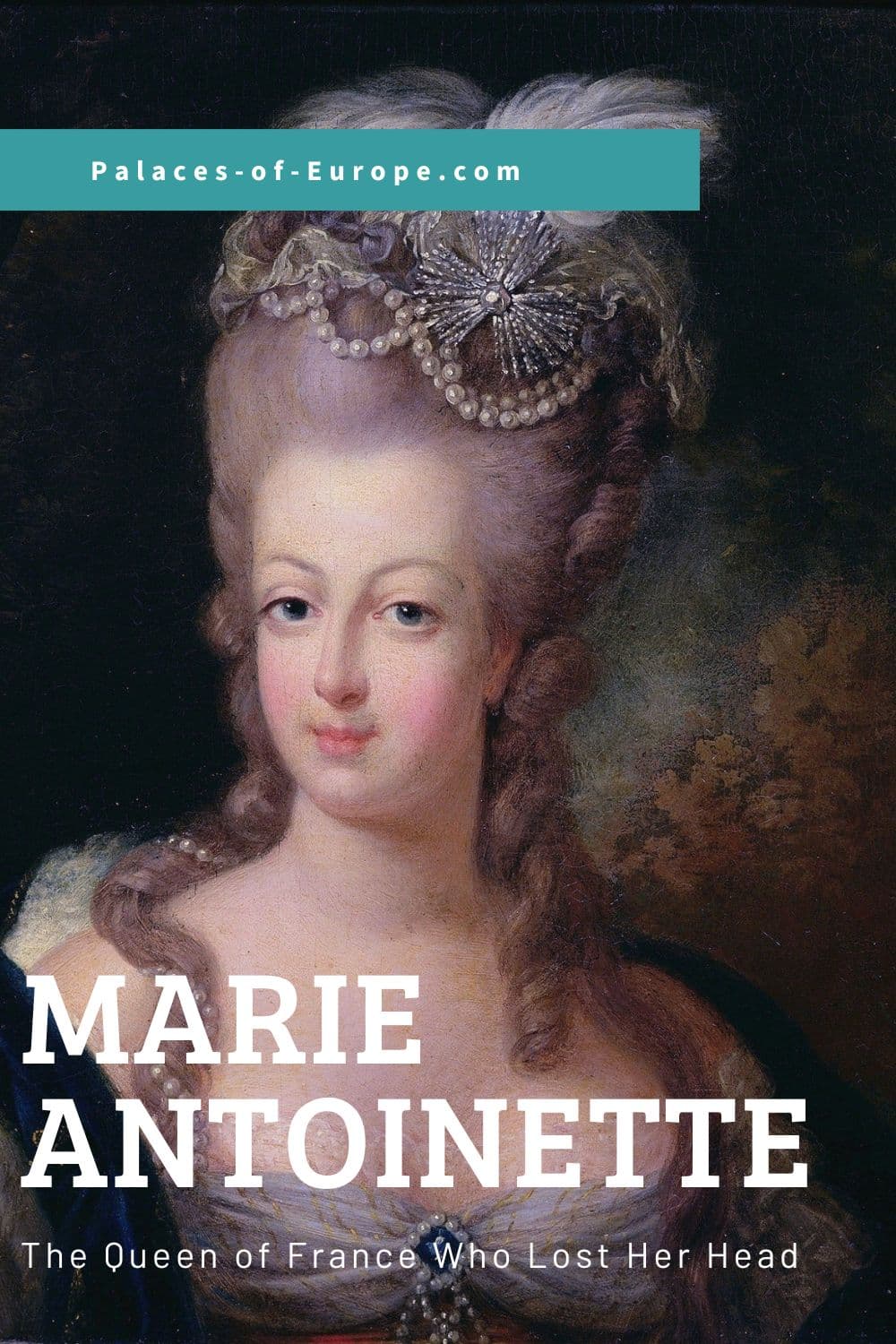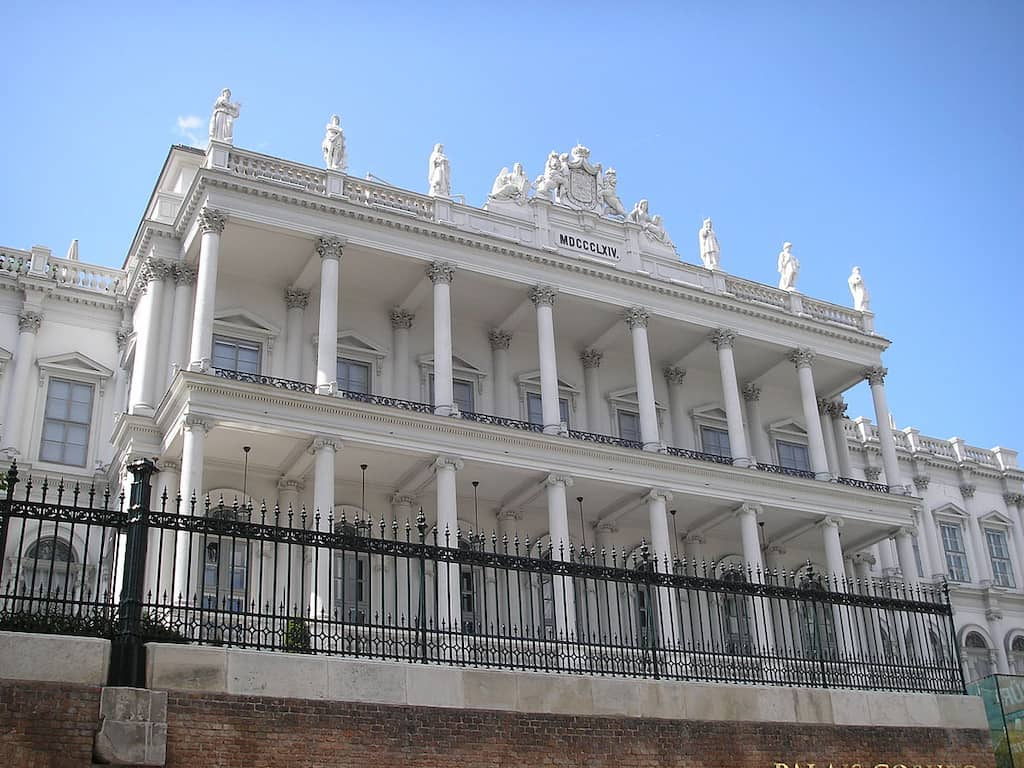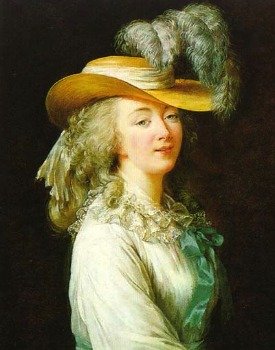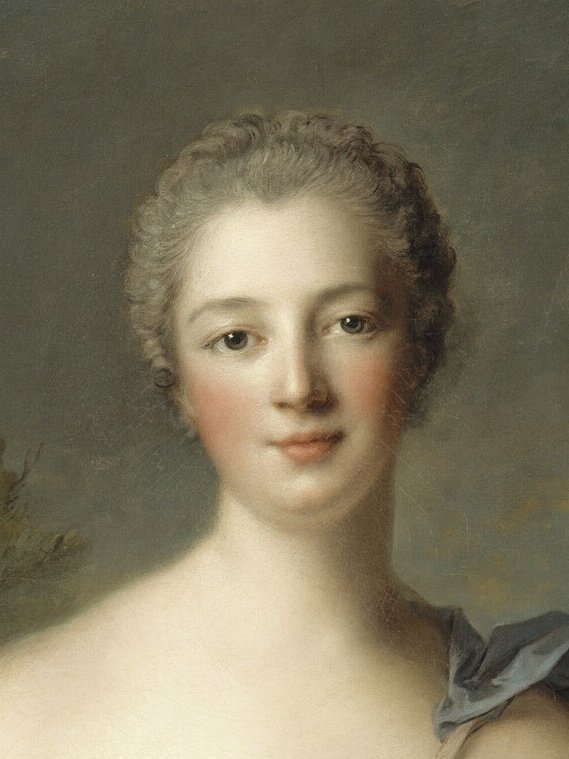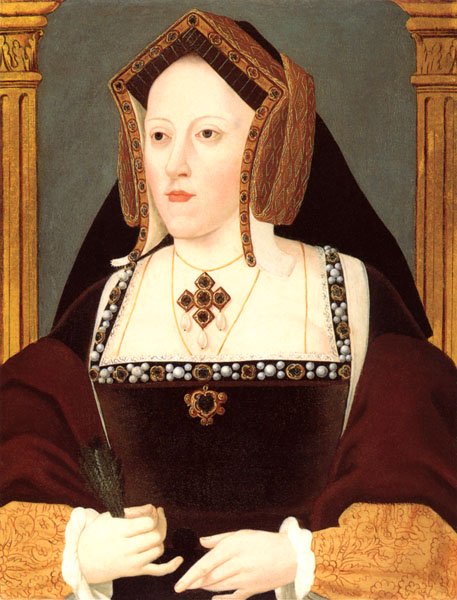Elizabeth I and Robert Dudley
Queen Elizabeth I ruled from 1558 to 1603 and never got married.
There is much speculation and debate among historians about whether Queen Elizabeth I and Robert Dudley had an affair. Robert Dudley, the 1st Earl of Leicester was her favourite courtier . In 1564 Queen Elizabeth I created the earldom, especially for Robert Dudley.
DISCLOSURE: I get commissions for purchases made through some of the links in this article.
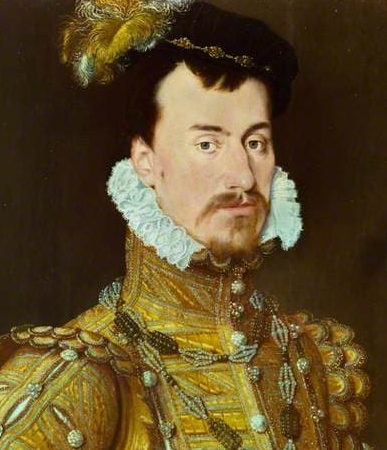 Robert Dudley ca 1565
Robert Dudley ca 1565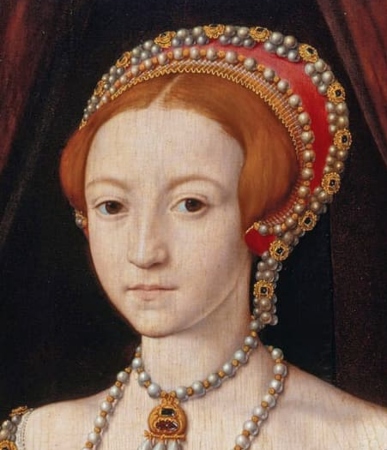 Elizabeth I when a Princess c.1546
Elizabeth I when a Princess c.1546Rumours of an affair
Dudley and Elizabeth had known each other since childhood, and they became close friends and confidants during Elizabeth's reign.
Robert Dudley served as Master of the Horse. Yes, that means he was responsible for the queen's horses an rides.
As Earl of Leicester he was a trusted advisor to Queen Elizabeth I and served as a member of her Privy Council. Although he fell out of favour a few times, he always managed to get back on top. He was one of the most powerful and influential men in England during the reign of Queen Elizabeth I, and he played a significant role in the country's political and military affairs.
There were rumours that Elizabeth I and Robert Dudley were romantically involved.
However, no conclusive evidence supports the claim that they had a sexual relationship.
What evidence do the gossipers have?
Elizabeth I visited Kenilworth Castle
Queen Elizabeth I visited Robert Dudley's Castle, Kenilworth Castle, on several occasions. Kenilworth Castle was one of Dudley's primary residences and it was a grand and impressive structure that was known for its lavish entertainment.
One of the most famous visits took place in 1575 when Dudley hosted a 19-day extravaganza at Kenilworth Castle to celebrate Elizabeth's arrival. The event was filled with music, dancing, and elaborate costumes, and it is said to have cost Dudley a small fortune to put on.
Bear in mind, that royal progresses were one of the key ways Elizabeth sought to consolidate her power and connect with her subjects. She wanted to exhibit her reputation as a popular and accessible monarch, and as there was no other way to show this, she had to do this in person. She was always travelling with a large retinue of courtiers and visiting various towns, cities, and noble houses along the way. The queen would be entertained with pageants, feasts, and other forms of spectacle, and she would also hold court and hear petitions from her subjects during her rounds. Knowing this, it is not surprising that Dudley, one of her most important courtiers, also welcomed her with a splendid feast.
The castle remains a popular tourist attraction today, and visitors can explore the ruins and learn more about its rich history.
letters between Elizabeth I and Robert Dudley
There are some suggestive letters written between Elizabeth and Dudley, which express their affection and admiration for each other.
She ends one of her letters to Holland, where Robert is in 1586:
"Now will I end that do imagine I talke still with you, and therefore lothely say farewell ōō thoughe ever I pray God blesse you from all harme and save you from all foes with my million and legion of thanckes for all your paines and cares. As you know, ever the same.* E.R."
Elizabeth had a loving nickname for Robert, she called him her ‘eyes’, symbolised in this letter as ōō.
You can see and read the full letter here at the National Archives.
In the last letter Robert wrote to Elizabeth, 7 days before his death on September 4, 1588, he writes:
"I most humbly besech your majeste to pardon your poore old servant to be this bold in sending to know how my gratious lady doth and what ease of her late paine she findes, being the chefest thinge in the world I doe prey for & for hir to have good health and longe lyfe/ for my none poore case, I contyndue still your meddycyn [medicine] and finde yt amended much better than with any other thinge that hath byn given me. Thus hoping to finde perfect cure at the bath, with the contynduance of my wontyd preyer for your majesty’s most happy preservacion. I humbly kyss your foote. From your old lodging at Rycott this Thursday morning reddy to take on my Journey.
by your most faythful and obedyent servant. R Leycester.
[postscript] Even as I had wrytten thus much I receyved your majesty’s token by young Tracye."
See the original here: Ntional Archives.
This letter was found 15 years later in the belongings of Elizabeth, she marked it as "His Last Letter". Must have been love!
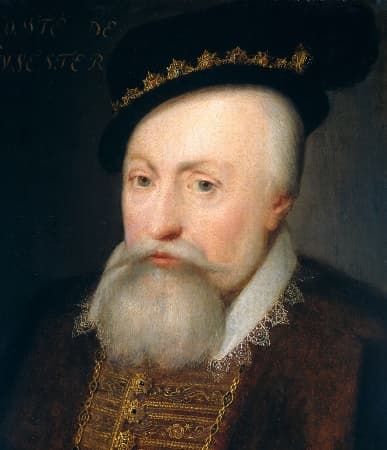 Robert Dudley as an older man
Robert Dudley as an older man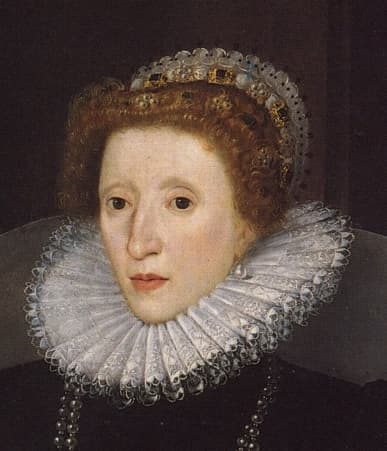 Elizabeth I ca. 1583
Elizabeth I ca. 1583Why did Elizabeth not marry Robert?
Why did she not marry him? In the era of Elizabeth's reign, it was indeed uncommon for women to be in power. As a female monarch in a male-dominated world, marrying anyone, even if it was the love of her life, would be a serious threat to her reign. Any husband in that era was the master of of the manor, she could not risk that. Few men would appreciate or accept to remain in the shadow of their wives. Definitely not the ambitious Robert Dudley.
On top of that, choosing a husband would mean rejecting others. Many foreign princes and diplomats were courting her. The only way to keep on the right side with everyone was to not choose anyone. Especially not someone who was lower in rank than any of her other suitors.
Some guys who were after Elizabeth's hand were for example:
- Francis, Duke of Anjou: the younger brother of the King of France, Francis courted Elizabeth for several years but was ultimately rejected.
- Archduke Charles of Austria: Elizabeth briefly considered marrying Charles but eventually decided against it, as she was concerned that such a marriage would anger her Protestant subjects.
- King Philip II of Spain: Philip proposed to Elizabeth several times but was consistently rebuffed, as the two countries were engaged in a bitter rivalry.
Should she have chosen Robert, these men would not have been amused, and they all had an army to back them up!
The Virgin Queen
Elizabeth chose to stay single and referred to herself as the "Virgin Queen", married to England.
She used this title to emphasize her celibacy and her devotion to her country. She put her duties as queen above any personal interests or romantic attachments.
Elizabeth's status as a "Virgin Queen" also had religious connotations. She was a devout Protestant and saw herself as a defender of the Protestant faith. She herewith equated herself with The Virgin Mary, a model of purity and virtue.
If she was in fact a virgin will always remain a mystery. It became a part of her legend and legacy, and it has helped shape her image as a powerful and independent female ruler.
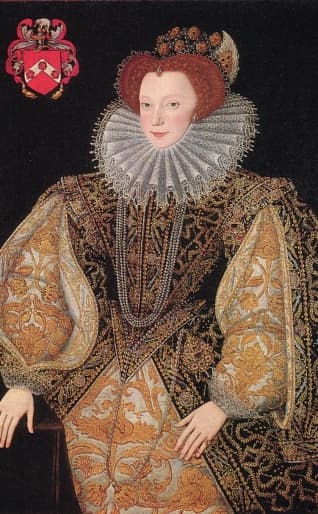 Lettice Knollys (1543-1634)
Lettice Knollys (1543-1634)What about Robert?
What about Robert, did he wait for his queen his whole life? No, he did not.
At age 18 Robert was already married to the 16-year-old Amy Robsart. Amy was found at the bottom of a flight of stairs with a broken neck in 1560. There were persistent rumours that Dudley had arranged for her to be murdered to clear the way for him to marry Queen Elizabeth I. These rumours were never proven, and the cause of Amy's death remains a subject of debate among historians.
When Elizabeth kept leading him on, Robert got married again. In 1578 he secretly wedded Lettice (Elizabeth) Knollys (1543-1634), a prominent figure in Tudor England and a member of the court of Queen Elizabeth I.
In fact, Elizabeth and Lettice were related, as the latter's grandmother was Mary Boleyn, the sister of Ann Boleyn (the queen's mother).
Queen Elizabeth was reportedly furious when she learned of the marriage, and she banished Lettice from the court. Robert was forgiven in due time, but Lettice was never welcome at court again
Lettice lived to be nearly 90 years old, and if you want to read her whole story, I recommend you read "My Enemy the Queen" by Victoria Holt , where she tells her side of the story.
Robert Dudley, the 1st Earl of Leicester, dies on September 4, 1588 at age 56.He is buried in St. Mary's Church in Warwick, England. Elizabeth dies 15 years later March 24, 1603. She is buried in Westminster Abbey, London, England. Her tomb is located in the Lady Chapel of the abbey, next to that of her half-sister, Queen Mary I.
Next to Robert lies his second wife Lettice. Even in death, she beat the Queen.
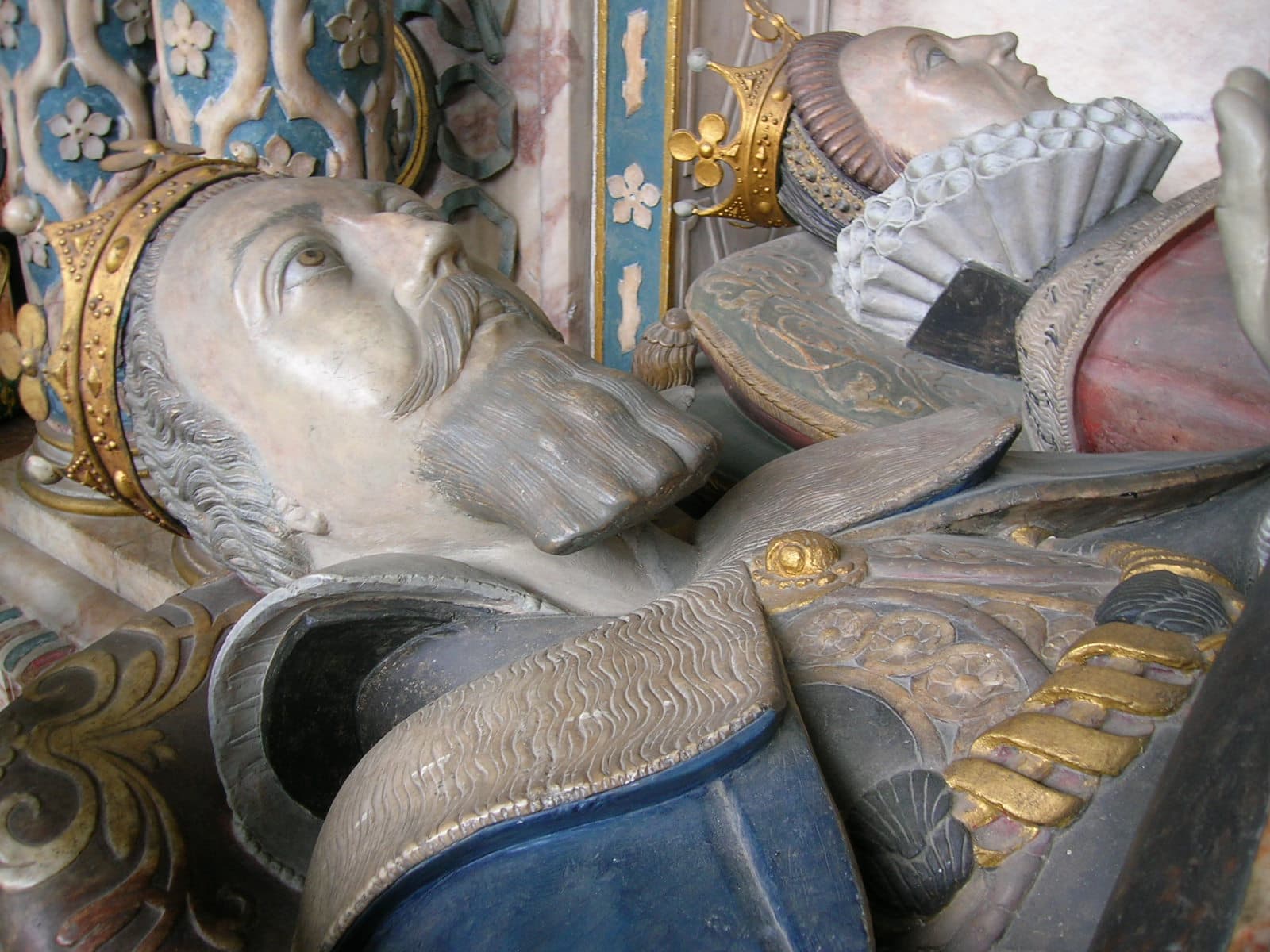 Tombe of Robert Dudley - By Tony Grist
Tombe of Robert Dudley - By Tony Grist



